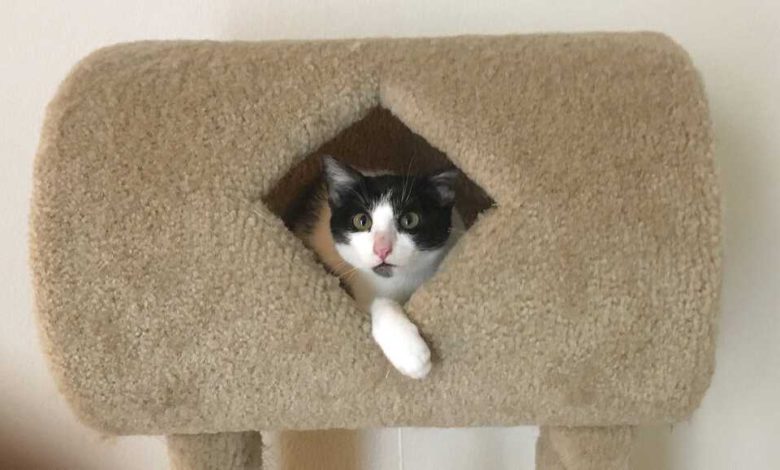

California lawmakers could soon ban the declawing of cats solely for the convenience of humans, advancing a bill on Thursday to halt what animal rights activists say is a painful procedure used primarily to prevent torn furniture and scratched skin.Claws on cats grow from the bone, not skin. Removing them sometimes requires amputating bones, while other procedures sever tendons to prevent a cat from extending its claws.Related video above: California woman mistakenly takes baby fox home thinking it was a kittenAnimal rights activists have long said declawing is inhumane when done solely for the benefit of humans, arguing the procedure is painful, leaves the animal defenseless and can cause other health problems.The American Veterinary Medical Association “discourages declawing as an elective procedure," saying it is not medically necessary in most cases. But the association says it is sometimes necessary “when a cat's excessive or inappropriate scratching behavior causes an unacceptable risk of injury or remains destructive."The bill that passed the state Assembly on Thursday would ban declawing except for a medically necessary purpose of addressing a recurring infection, disease, injury or abnormal condition that affects the cat's health. The bill specifically bans declawing “for a cosmetic or aesthetic purpose or to make the cat more convenient to keep or handle.”The California Veterinary Medical Association says that ignores situations where cat owners are “taking blood thinners, receiving immunosuppression drugs, or other persons whose health would be endangered by a severe scratch.”In a letter to lawmakers, the association wrote that the veterinary industry has “appropriately regulated itself regarding this procedure over the years, and continues to do so in a thoughtful and compassionate manner.”The bill now heads to the state Senate.New York was the first state to ban the procedure in 2019, followed by Maryland earlier this year. This is at least the fourth time California lawmakers have tried to ban declawing since 2018. All of the previous attempts failed.Eight California cities — including Los Angeles and San Francisco — ban declawing. In 2008, California lawmakers passed a law that would have stopped local governments from banning declawing. But the bill never became law because then Republican Gov. Arnold Schwarzenegger vetoed it.Thursday, a majority of lawmakers in the California Assembly appeared eager to ban the procedure statewide. Democratic Assemblywoman Wendy Carrillo, the author of the bill, quoted primatologist Jane Goodall in saying that “cruelty is the worst of human sins.”Democratic Assemblymember Alex Lee talked about his cat, Soba, saying it would be “heartbreaking to know cats like her would be declawed.”“If a cat has essentially their finger bones taken out, their only defense becomes their teeth,” Lee said. “And having had many loving bites from my cat, I would rather be scratched than bitten by my own cat.”
California lawmakers could soon ban the declawing of cats solely for the convenience of humans, advancing a bill on Thursday to halt what animal rights activists say is a painful procedure used primarily to prevent torn furniture and scratched skin.
Claws on cats grow from the bone, not skin. Removing them sometimes requires amputating bones, while other procedures sever tendons to prevent a cat from extending its claws.
Related video above: California woman mistakenly takes baby fox home thinking it was a kitten
Animal rights activists have long said declawing is inhumane when done solely for the benefit of humans, arguing the procedure is painful, leaves the animal defenseless and can cause other health problems.
The American Veterinary Medical Association “discourages declawing as an elective procedure," saying it is not medically necessary in most cases. But the association says it is sometimes necessary “when a cat's excessive or inappropriate scratching behavior causes an unacceptable risk of injury or remains destructive."
The bill that passed the state Assembly on Thursday would ban declawing except for a medically necessary purpose of addressing a recurring infection, disease, injury or abnormal condition that affects the cat's health. The bill specifically bans declawing “for a cosmetic or aesthetic purpose or to make the cat more convenient to keep or handle.”
The California Veterinary Medical Association says that ignores situations where cat owners are “taking blood thinners, receiving immunosuppression drugs, or other persons whose health would be endangered by a severe scratch.”
In a letter to lawmakers, the association wrote that the veterinary industry has “appropriately regulated itself regarding this procedure over the years, and continues to do so in a thoughtful and compassionate manner.”
The bill now heads to the state Senate.
New York was the first state to ban the procedure in 2019, followed by Maryland earlier this year. This is at least the fourth time California lawmakers have tried to ban declawing since 2018. All of the previous attempts failed.
Eight California cities — including Los Angeles and San Francisco — ban declawing. In 2008, California lawmakers passed a law that would have stopped local governments from banning declawing. But the bill never became law because then Republican Gov. Arnold Schwarzenegger vetoed it.
Thursday, a majority of lawmakers in the California Assembly appeared eager to ban the procedure statewide. Democratic Assemblywoman Wendy Carrillo, the author of the bill, quoted primatologist Jane Goodall in saying that “cruelty is the worst of human sins.”
Democratic Assemblymember Alex Lee talked about his cat, Soba, saying it would be “heartbreaking to know cats like her would be declawed.”
“If a cat has essentially their finger bones taken out, their only defense becomes their teeth,” Lee said. “And having had many loving bites from my cat, I would rather be scratched than bitten by my own cat.”
Source link







